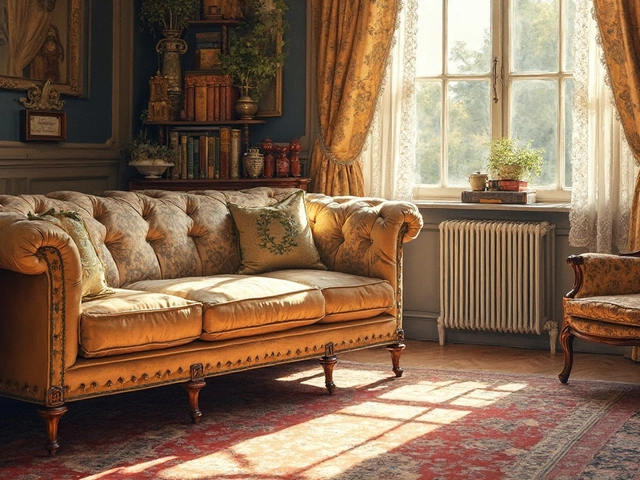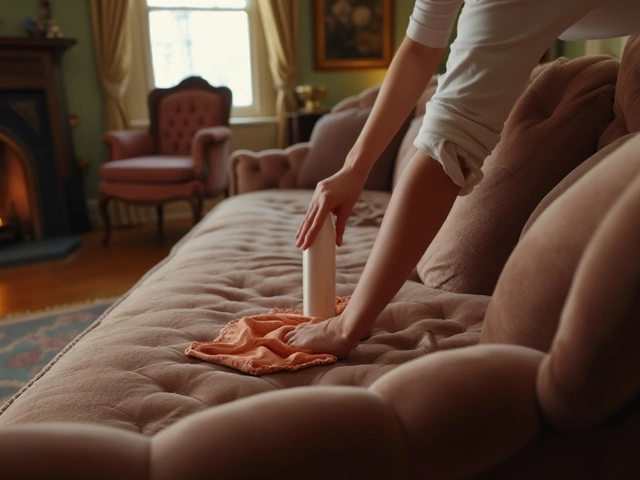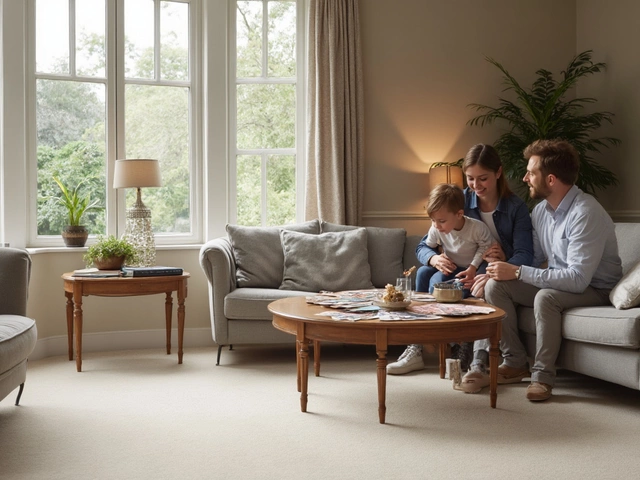Is Investing $400 on a Rug Worth It? Exploring Quality and Value
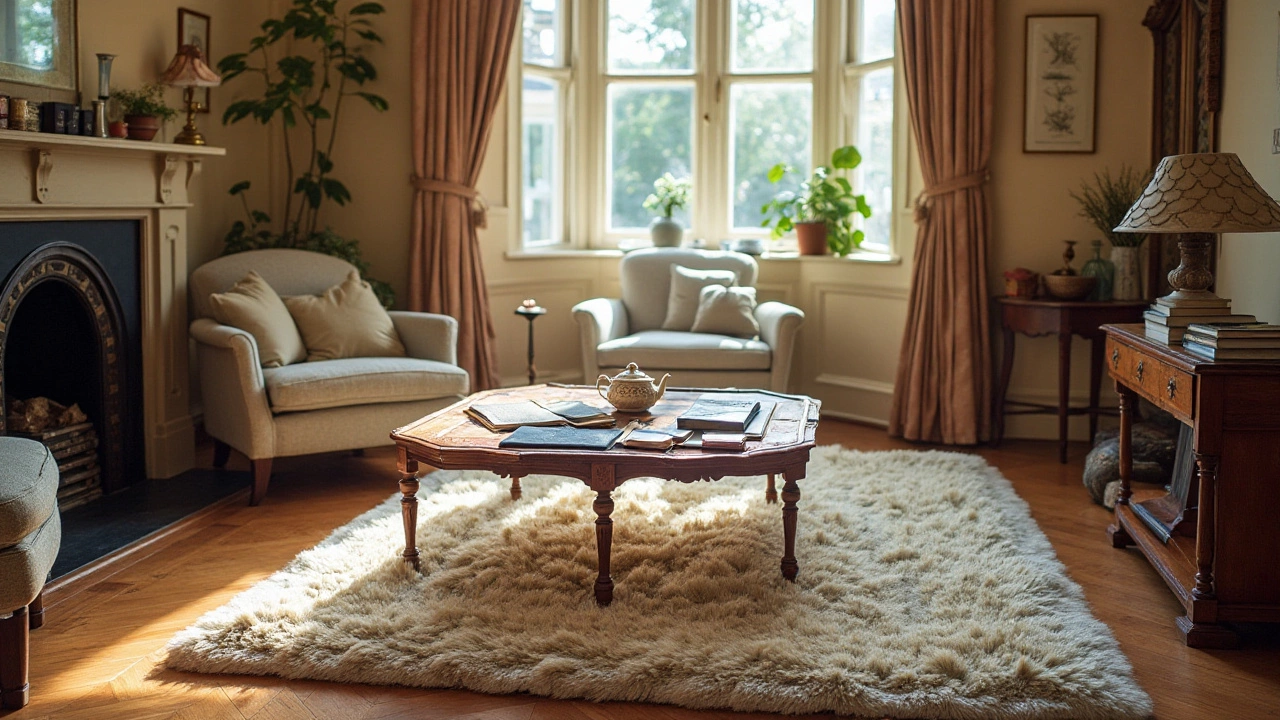
When it comes to home decor, rugs often play a crucial role in tying a room together, adding warmth, and expressing personal style. However, the question of how much to spend on a rug can be a daunting one, especially with the seemingly endless options available in the market today.
Is a $400 rug a splurge or a sensible investment? This article seeks to unpack the factors that determine rug pricing and quality, bridging the gap between budget and taste. We'll delve into the materials that contribute to durability, the styles that offer timeless appeal, and how to ensure your choice meets your decorating needs without straining your wallet.
Understanding Rug Pricing
When setting out to buy a rug, it might seem like a straightforward task at first. But delve a bit deeper, and you will quickly find that the world of rugs is far more complex than you might have imagined. From centuries-old traditions to contemporary styles, the price tags attached to rugs tell a fascinating story. To understand why a rug might cost $400, it's important to consider several key factors.
First and foremost, the material of a rug plays a significant role in its cost. Natural fibers like wool, silk, and cotton tend to be more expensive due to their quality and durability. Wool, for instance, is celebrated for its softness and resilience, making it a popular choice for living spaces. In contrast, synthetic materials like nylon or polyester can be more budget-friendly but might not offer the same longevity or comfort underfoot. A rug made from high-quality wool or silk will command a higher price, and its beauty often justifies that cost to those who appreciate fine craftsmanship. Home decor enthusiasts often gravitate towards these options for their rich texture and long-lasting nature.
Another crucial component affecting the price is the method of production. Hand-knotted rugs, which are typically crafted using traditional techniques, can take months or even years to complete and are often considered works of art. These require a skilled artisan's time and effort, which is reflected in the price. On the other hand, machine-made rugs are generally less costly since they're manufactured at a faster pace. This difference in production technique also influences the lifespan and uniqueness of each piece; hand-knotted rugs tend to last generations, becoming treasured family heirlooms.
"A rug can anchor a room, setting the tone both visually and conceptually," observes renowned interior designer Kelly Wearstler. "Its texture and pattern can make a powerful impact."
Design and brand can also sway rug pricing considerably. A rug from a renowned designer or a prestigious brand might come with a premium price due to the designer's reputation and the brand's commitment to quality. Unique designs, limited editions, or collaborations can also add to the cost. That said, it's not all about the big names. Often, shopping from local artisans or smaller companies can unearth distinctive and memorable pieces, sometimes at a lower cost, provided you don't mind deviating from mainstream choices.
Lastly, let's not forget the size of the rug. The larger the rug, the more materials and labor are required, naturally making it more expensive. This is why rug sizing should carefully match both your budget and spatial requirements. For many, understanding these elements dramatically transforms the shopping experience from a simple transaction to an appreciation of interior design nuances, turning it into a journey of discovering both quality and heritage. By being informed about these factors, you are better equipped to evaluate if a particular rug justifies a $400 price tag for your budget and space.
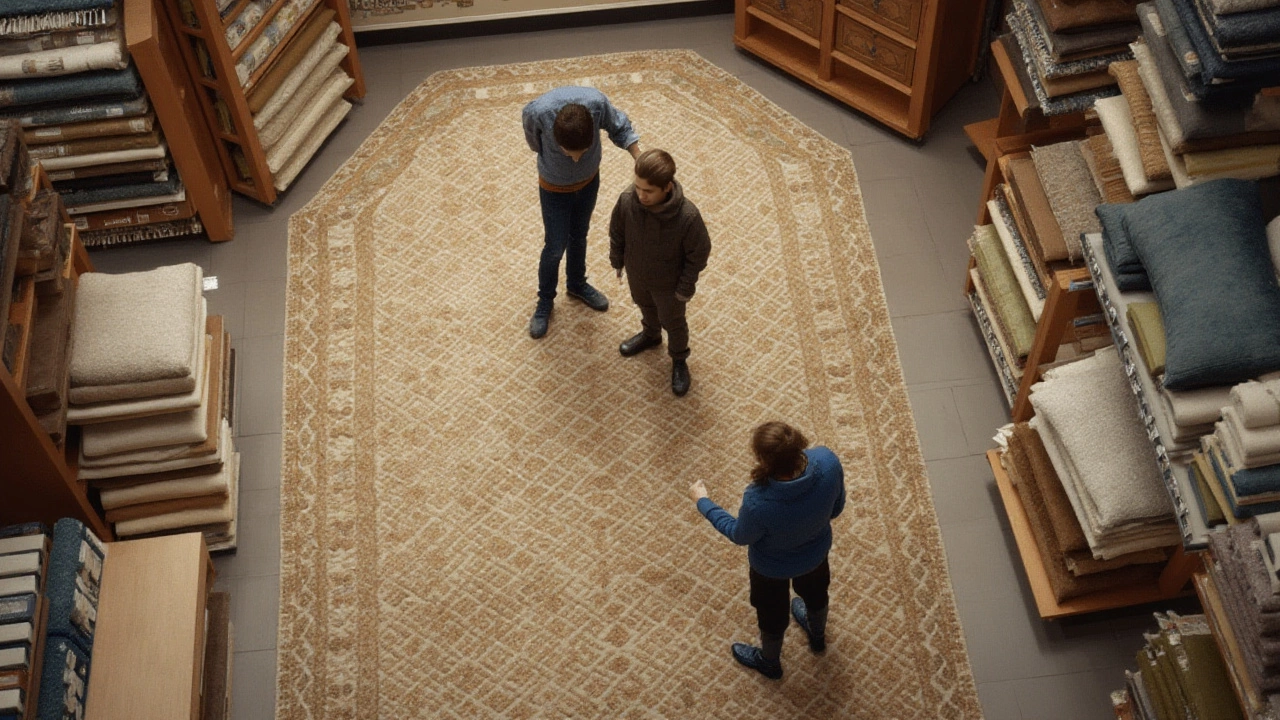
Materials and Durability
When selecting a rug, the choice of material plays a vital role in determining its durability and suitability for your home. There are numerous materials available, and each has its strengths and weaknesses, affecting not only the rug's lifespan but also its feel, appearance, and maintenance needs. Natural fibers like wool, cotton, and jute are popular for their durability and timeless appeal. Wool, for instance, is a favorite due to its resilience and ability to withstand high foot traffic, making it ideal for living rooms and hallways. Wool fibers naturally repel stains, a bonus for households with kids or pets. Though on the higher end of the price spectrum, many agree that this investment pays off in longevity and looks.
Cotton rugs, on the other hand, offer a budget-friendly and versatile option. They are typically machine-washable, adding ease of maintenance to their list of benefits. However, cotton rugs may wear out faster than wool ones, especially in areas with heavy use. Jute and sisal bring natural textures to spaces, offering a rustic charm. While jute is soft underfoot, it's less resistant to stains and moisture, requiring careful placement away from spills. Sisal, more robust than jute, holds up well in busy areas but lacks softness, making it less ideal for places where comfort is a priority.
Synthetic materials like nylon, polyester, and polypropylene have gained popularity for their affordability and durability. These options can mimic the look of natural fibers while providing tough resistance to stains and fading. Nylon is exceptionally resilient, bouncing back from wear, and it's easy to clean. Polyester, although prone to flattening over time, offers vibrant colors that breathe life into any room. Polypropylene is a budget-friendly choice, resistant to moisture and easy to clean, making it suitable for outdoor settings. It's important to consider how each material not only affects the rug's appearance but also its eco-friendliness. Natural fibers are often biodegradable, whereas synthetic options are not, posing a consideration for environmentally conscious buyers.
"A rug really ties the room together," says renowned interior designer Nate Berkus.
"It anchors furniture, adds warmth, texture, and color, and it's an opportunity to make a statement or keep it neutral."Whether you're seeking a statement piece or a subtle backdrop, the material you choose will deeply impact the rug's role in your home. Balancing your budget with the benefits and limitations of each material will help you find a rug that enhances your living space while standing up to daily life. Remember that a rug is more than just a floor covering; it's an integral part of your home's comfort and style journey, shaping the atmosphere and experience in your rooms.
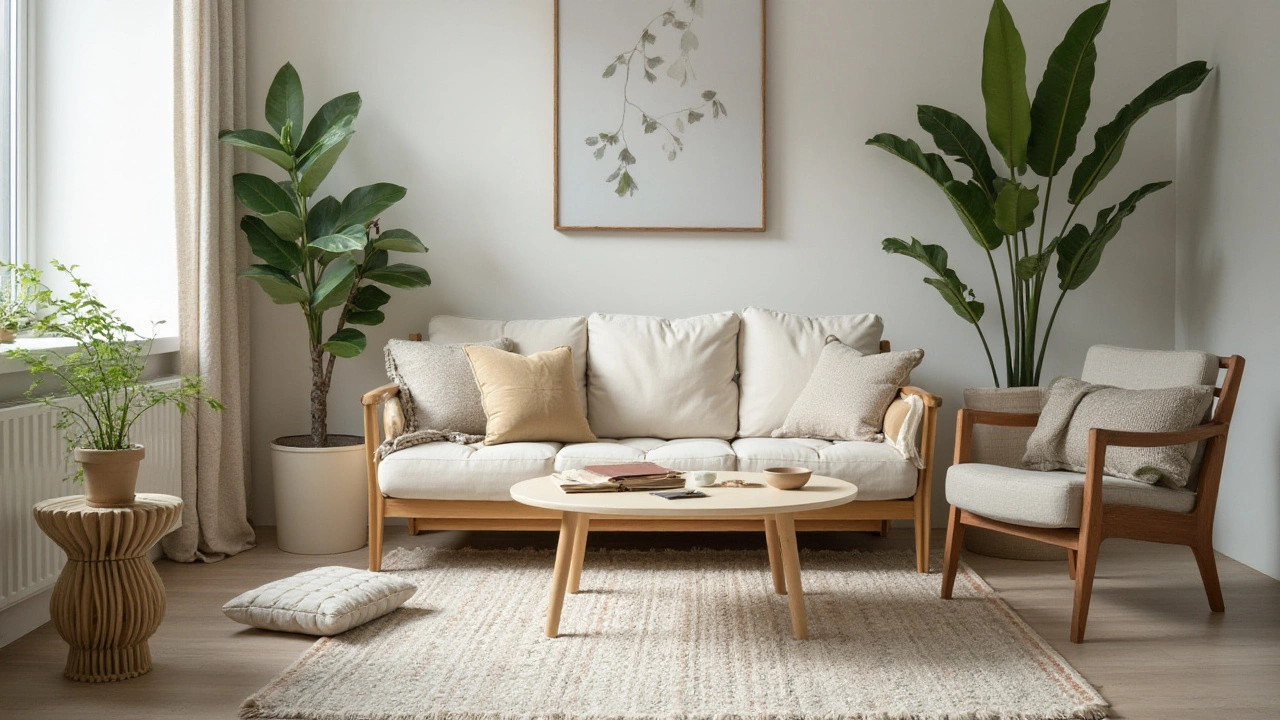
Matching Style with Cost
Choosing the right rug for your home involves a delicate balance between style, preference, and budget. Rugs are more than just floor coverings; they serve as an aesthetic anchor for a room, setting the tone and adding layers of texture. The right rug will complement your furniture, provide comfort, and, most importantly, reflect your personal style. But how do you determine if a particular rug justifies its $400 price tag?
It all begins with style. A rug should resonate with your existing decor. Whether your home embodies a minimalist vibe or leans towards boho-chic, or even vintage grandeur, knowing this will guide your selection process. A $400 budget opens up avenues across a broad spectrum of styles, allowing choices from intricate Persian patterns to sleek, modern geometric designs. Color plays a pivotal role too; it can harmonize with upholstered pieces or make bold statements that captivate the eyes of your guests.
The cost often signifies the level of craftsmanship involved. Hand-knotted and hand-tufted rugs command a higher price due to their detailed construction and the time invested in creating them. Federal reports indicate that handmade rugs can take weeks or even months to complete. This painstaking effort guarantees not only durability but also uniqueness, often carrying the artisan's signature touch that factory-produced options lack. As the saying goes, 'Fine art on the floor,' aptly describes these masterpieces.
"The bitterness of poor quality remains long after the sweetness of low price is forgotten." – Wise Old Saying
Then there's the question of material. Wool, silk, and cotton are premium materials that age gracefully, enhancing their beauty over time, unlike synthetic blends, which might falter under heavy foot traffic. Wool is particularly cherished for its natural stain-resistant properties, making it ideal for busy households. A quick comparison: a wool rug priced at $400 can offer significantly better longevity than a synthetic alternative of a similar price.
Let's not overlook the hidden benefits a rug brings beyond aesthetics. It absorbs sound, providing acoustic comfort in bustling households. Rugs also offer thermal insulation, crucial for those chilly winter mornings when stepping onto a cold floor evokes a startling sensation. A National Interior Design survey reveals that 70% of homeowners prioritize comfort when investing in decor, making rug selection far from a decision based purely on appearances.
Consider practicality too. Cleaning and maintenance are less daunting with high-quality rugs, making your investment worthwhile in the long run. Regular vacuuming and occasional professional cleaning can keep your rug looking fresh for years. The initial $400 might seem significant, but when spread over the decades of use it offers, it becomes a small price to pay for style, comfort, and durability.
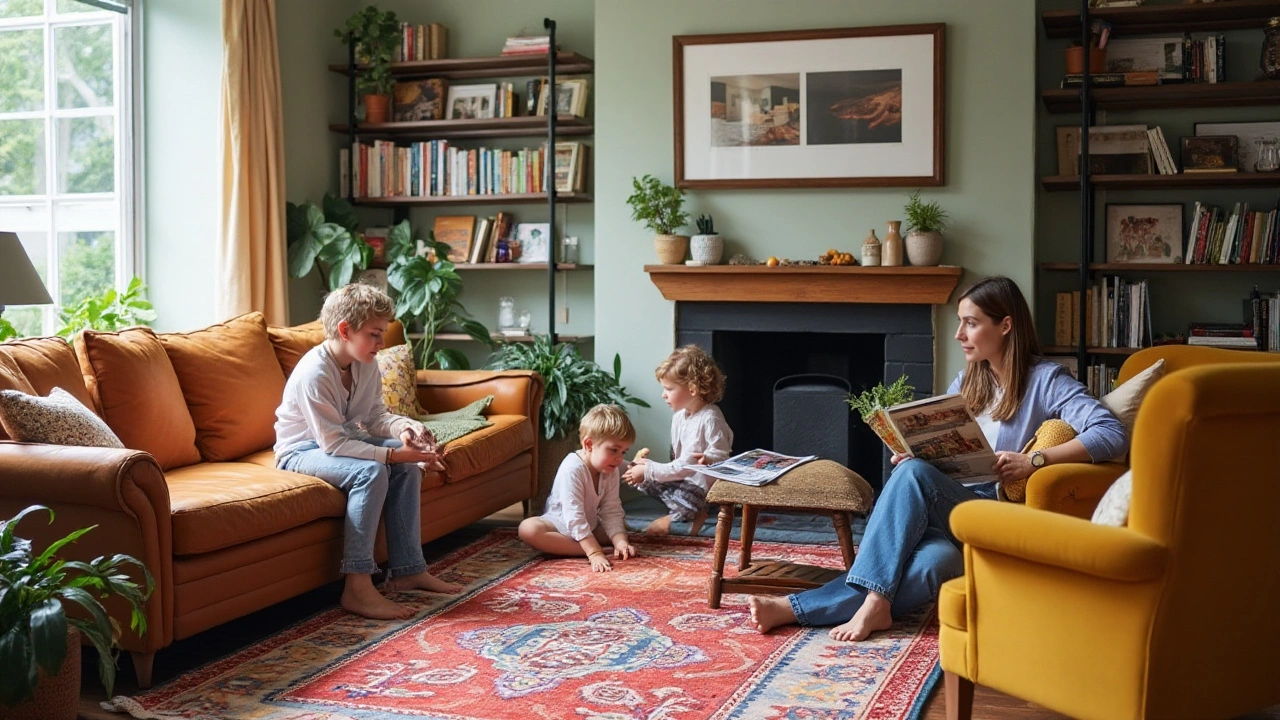
Smart Shopping Tips
Embarking on a quest to find the perfect rug that suits your home and budget can be an exciting yet daunting adventure. With so many options available, it's essential to approach this task with a strategy that ensures you make a sound investment. Start by defining the primary purpose of your rug. Are you seeking a plush comfort piece for your living room, or a durable entryway addition that withstands high foot traffic? Knowing your primary need will guide your selection process significantly.
Consider scaling your choice by size and placement. For instance, a large room often benefits greatly from an equally substantial rug that anchors the space, while smaller, airy settings might require a more delicate touch. This nuanced approach ensures your home decor remains balanced without overwhelming the existing flow. If $400 feels too steep, remember that negotiating, seasonal sales, or seeking out local artisans can often yield surprisingly good deals.
"It's not about how much you spend, but how well you select," suggests interior designer Emily Henderson, who emphasizes the importance of strategy when purchasing home decor items.
Colors and patterns should harmonize with your desired mood and existing interior design. Are you inclined toward bold visual statements, or do subtle, neutral shades appeal more to your minimalist sensibilities? While trends come and go, timeless designs usually stand the test of time and offer greater satisfaction over the years. Additionally, it might be worth considering rugs that incorporate sustainable practices; not only are they eco-friendly, but they often feature unique craftsmanship.
Make a Budget Plan
Managing your budget is pivotal when selecting a rug, especially when exploring the $400 range. Begin with mapping out your financial comfort zone and remain steadfast in your commitment to this boundary. With discipline, prioritizing quality without straying into unplanned splurges becomes achievable. Some shoppers find value in second-hand markets or clearance sections, where hidden gems might be waiting at a fraction of their original cost.
The materials of a rug also play a significant role in its pricing and longevity. Wool rugs, known for their resilience and cozy warmth, typically lean toward the pricier end but repay those dollars in durable wear. Conversely, synthetic materials provide an affordable alternative, making them ideal for rapidly-developing spaces prone to spills and wear. To better understand which choice fits your lifestyle, consider a table that categorizes pros and cons:
| Material | Benefits | Considerations |
|---|---|---|
| Wool | Durable, warm, natural | Can be expensive, requires care |
| Synthetic | Affordable, easy to clean | May lack longevity, less natural |
And don't forget to factor in maintenance costs into your decision; a rug that requires constant professional cleaning might end up costing more in the long run.

